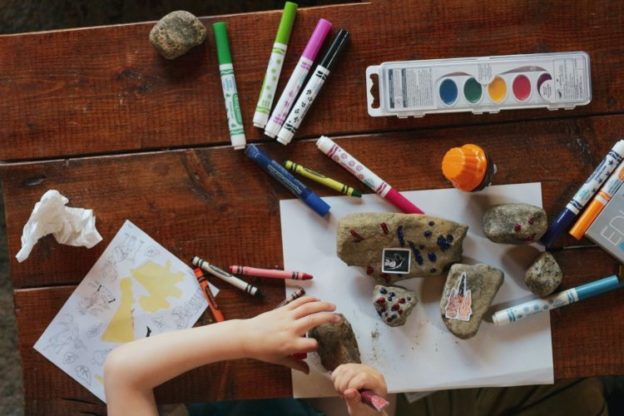Since COVID lockdowns left many families confined to the home, homeschooling has become a more common responsibility than ever before. Some parents have struggled to keep their kids engaged in the learning process, while others have thrived on the opportunity to get creative. Whichever camp you’re in, you’ll love these suggestions for simple toys you can make in the comfort of home.
Get creative with egg cartons and cereal boxes
Egg cartons might seem like an odd shape to work with if you’ve never used them before, but they happen to make wonderful toy replicas for just about any long vehicle! Your kids will have access to endless entertainment in the form of cardboard buses, trucks, and limousines. Even if they’d rather go off-road, you can make a pretty fabulous caterpillar with any leftover cartons, and any cereal boxes you have lying around will help to fill cardboard gaps. The creative potential is truly multi-dimensional.
Make your own slime
If you were to do a survey of your child’s classmates, you’d find that most of them have fond memories of that one day in science class when they made their own slime for the first time. Making your own slime is not only an awesome science experiment, but also a great way to create something tactile for the kids to play with. You can even use fun colours and textures to make it a complete creative experience.
Give your old clothes a second life
There’s something sentimental about a soft toy, especially one made at home with love – and all you need to make one is a sewing machine (or a needle and thread), some scissors, an old piece of clothing you don’t wear anymore, and something to stuff it with. First, decide on what kind of toy you’d like to make, and draw out a pattern onto the fabric that you can cut. Then, cut out two pieces of the same shape, stitch them together on one side, fill it up with the stuffing, and close the gap with the thread. You’ll never need to buy another soft toy!
Cut some shapes with old coat hangers
Sometimes, paper and cardboard just won’t cut it for the types of toys your kids really want to play with, and for those times, coat hangers might just do the trick. If you have a few of the classic variety – made from durable (yet bendable) wire – hanging around, they’ll be just what you need to create a few more intricate craft projects. Bend them into a bubble wand, a catapult, or a basket frame the kids can use to carry their toys around (and maybe even put them away later on).
Create your own blocks
If you have relatively young kids at home, you’ll know that nothing gets them excited quite like the thrill of building up a tower of blocks only to send it tumbling. You might even have heard about all the subtle ways these simple toys can help with the development of gross and fine motor skills. What you might not know is just how many options exist in terms of materials! Whether your kids prefer the texture of classic wooden alphabet blocks or a softer, quilted version with velcro attachments, there are plenty of ways to make these at home. The wooden blocks in particular make a great craft activity for young kids, since all you need is a couple of blocks of wood and materials for decorating.
Make something musical
Adding the element of sound instantly makes even the most basic toy way more exciting, and making music has amazing cognitive benefits for kids of all ages. The thing is, as soon as you introduce a musical toy into the house, you’ll be hearing the same song on repeat until the batteries wear out – so why not make your own instruments instead? The sound might not be top quality, but they will be loads of fun to play, and they’ll light up the right side of your kids’ brains in no time. Who knows? You might have a future rock star on your hands!
Spell it out
Learning the alphabet is such an important job for young kids, and the more exposure they have to those twenty-six letters – starting with their brand new, homemade alphabet board – the faster and easier the process will be! All you need is a piece of flat wood and a stack of letters to stick onto it – and if you can find letters with different colors, designs, and textures, you’ll get sensory bonus points for creativity. Then, once your child is confident with the alphabet, you can replace the letters with colors, numbers, or even pictures of their favorite animals.
The only real limit to the fun you can have creating toys with (and for) your kids is the bounds of your imagination, so go wild! Think about all the things you would have loved to have in your toy box when you were a kid, share ideas with your friends, and most importantly, enjoy the special time you spend at home with the most important people in your life.








